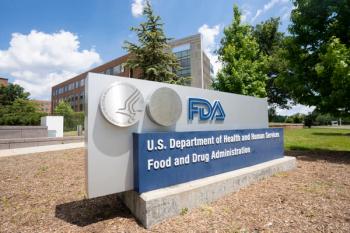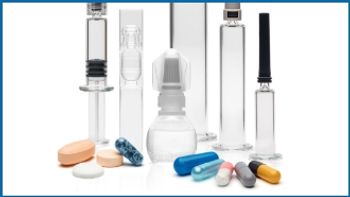
Pharmaceutical Technology Europe
- Pharmaceutical Technology Europe-08-01-2010
- Volume 22
- Issue 8
Latest EU Guidelines For Biosimilars Dissected
The EMA's Guideline on Similar Biological Medical Products provides overarching guidance, but since its introduction a range of more specific guidelines have also been developed.
The European Medicines Agency (EMA) adopted the Guideline on Similar Biological Medical Products in 2005 and the first biosimilar product (Omnitrope; Sandoz GmbH, Switzerland) was subsequently marketed in Europe in 2006.1,2 The guideline still provides overarching guidance, but since its introduction the EMA has developed a range of more specific guidelines that provide details for different product classes of biosimilars.
Low molecular weight heparins
To date, guidelines have been adopted for biosimilar insulin, somatropin, granulocyte colony-stimulating factor, erythropoietin and, most recently, low molecular weight heparins (LMWHs). Unlike other biosimilar guidelines, the guideline concerning LMWHs specifically states that conventional pharmacokinetic studies are not required because of the problems in developing bioanalytical assays for LMWHs;3 instead, pharmacodynamic assessment of antiFXa and antiFIIa is recommended. It is also obligatory to monitor patient platelet counts regularly and to test for PF4heparin complex-antibodies in those who develop the rare, but serious side effects of thrombocytopenia or thromboembolic complications when using LMWHs.
Interferon alpha
The EMA has published a reflection paper that lays down key considerations for developing biosimilar interferon alpha products.4 The paper suggests a range of animal pharmacodynamic models that might be suitable for the assessment of interferon alpha products for different clinical indications, and also explains that a 4week toxicity study in Syrian Golden hamsters should be sufficient to meet requirements. The reflection paper does not give margins for the demonstration of pharmacodynamic or pharmacokinetic bioequivalence, stating merely that margins should be developed prior to testing and appropriately justified. However, the paper is more helpful on the issue of pharmacodynamic testing as it suggests a range of markers for consideration. Finally, the paper also provides useful advice on clinical study design and importantly suggests that extrapolation from one clinical indication to another may be possible if mechanistically justifiable.
Erythropoietins
Recently, a revision to the EMA's guideline on the non-clinical and clinical development of biosimilar erythropoietins was also made to indicate that extrapolation from one clinical indication to another could be made in the case of this product class, too.5 Indeed, based on the mechanism of action of these products this should be more straightforward than for interferon alpha products, where the mechanisms of action can be less well understood. The change in the guideline broadens the potential market for erythropoietin biosimilar products, without requiring further clinical studies in related indications.
MAbs
One of the most significant changes likely to happen in the medium-term in Europe is the development of a biosimilars guideline for monoclonal antibodies (MAbs), for which there is currently no specific guidance. As some of the biggest-selling products, MAbs represent good potential targets for those seeking to develop biosimilars and an increasing number of companies are doing just that, according to experiences from our firm.
A concept paper released in October 2009 indicated that the Biologics Working Group would be developing a draft guideline in 2010,6 and included a number of areas that should be addressed. Interestingly, the paper also introduced the possibility that development pathways may be different for MAbs with immunomodulatory and cytotoxic modes of action. One of the other key aspects mentioned in the paper was immunogenicity, reflecting the size, complexity and extent of post-translational modification of this class of products relative to the simpler classes of biologics developed as biosimilars to date. The EMA has also released a concept paper on the assessment of immunogenicity of MAbs, which will provide useful guidance relevant to the development of MAb biosimilar products.7
Further, the EMA has released concept papers for guidelines relating to interferon beta and follicle stimulation hormone biosimilar products.8,9 The deadline for comments on these papers passed in June of this year.
The differences between Europe and the US
The EMA has published a suite of guidelines for the development of biosimilars, but the FDA has yet to issue any guidelines. In March this year, however, legislation in the US was put in place that allows the FDA to develop guidelines for biosimilars — the first guidelines are now expected later this year.
In recent years, the EMA and the FDA have been working more closely; for example, the agencies have recently collaborated on developing orphan drugs and drug safety update reports. As such, the FDA guidelines are likely to follow the EMA's for the most part, although there will likely be some areas of significant difference. The most talked about is the period of exclusivity. In Europe, innovators have a 10year data exclusivity period, whereas recent US legislation allows for a 12year period of exclusivity, with a further 0.5 year available if paediatric clinical trials are conducted. Canada, by contrast, allows only for a 6year exclusivity period. These differences may impact on marketing strategies for innovator biologics as well as biosimilars
The best business and development strategies
The first thing that any company should do before they embark on the development of a biosimilar product is to ensure that they understand the innovator product as much as possible. The process for manufacturing a biologic product very much defines the end product. As such, the processes for manufacturing the biosimilar should be rigorous and as close to those of the reference product as possible.
In many cases, it is not possible to follow the innovator's manufacturing process exactly. In these instances, the biosimilar should be carefully assessed for any microheterogeneities in sequence and changes to glycosylation patterns, which may impact the binding characteristics and, potentially, affect immunogenicity. The testing strategy in such cases should be adjusted to account for any small differences found to ensure that the product is as safe and efficacious as the innovator product.
For the above reasons, the strategy for each biosimilar product should be tailored on the basis of the quality information available and any small differences found between the biosimilar and the innovator product. A clear understanding of the development pathway for biologics of the class is also essential.
Peter Gaskin is Principal Consultant at Aptuit Consulting.
References
1. EMA, Guideline on similar biological medical products (October, 2005).
2. EMA, European Medicines Agency adopts first positive opinion for a similar biological medicinal product (January, 2006).
3. EMA, Guideline on non-clinical and clinical development of similar biological medicinal products containing low-molecular-weight-heparins (March 2009).
4. EMA, Reflection Paper: Non-clinical and clinical development of similar medicinal products containing recombinant interferon alfa (April, 2009).
5. EMA, Guideline on non-clinical and clinical development of similar biological medicinal products containing recombinant erythropoietins (Revision) (March, 2010).
6. EMA, Concept paper on the development of a guideline on similar biological medicinal products containing monoclonal antibodies (October, 2009).
7. EMA, Concept paper on immunogenicity assessment of monoclonal antibodies intended for in vivo clinical use (March, 2009).
8. EMA, Concept paper on similar biological product containing recombinant interferon beta (March, 2010).
9. EMA, Concept paper on similar biological medicinal products containing recombinant follicle stimulation hormone (March, 2010).
Articles in this issue
over 15 years ago
Biosimilars: Is It Worth Taking On The Regulators?over 15 years ago
Pharma Takes Control Of Distribution Chainsover 15 years ago
Is Your Packaging Line Operating To Full Capacity?over 15 years ago
The New EMA Bioequivalence Guideline: Key Considerationsover 15 years ago
The European Generic Medicines Associationover 15 years ago
Newsover 15 years ago
Can Payers Afford To Watch And Wait?over 15 years ago
The Changing Landscape For BiosimilarsNewsletter
Get the essential updates shaping the future of pharma manufacturing and compliance—subscribe today to Pharmaceutical Technology and never miss a breakthrough.





